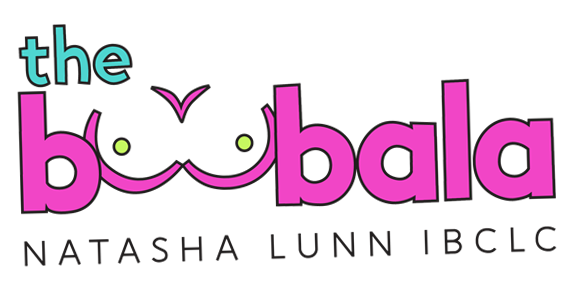Page Content
- Why does my baby start crying while eating?
- Can teething cause crying while eating?
- How do I stop my baby from comfort feeding?
- What are the signs of colic in babies?
- Why does my baby pull away and cry while bottle feeding?
- Why does my baby cry uncontrollably during feeding?
- What is flutter feeding?
- How to tell the difference between comfort nursing and feeding?
- What does colic poop look like?
- How long does cluster feeding last?
Understanding Why Your Baby Cries While Feeding
Crying during feeding can be a distressing experience for both parents and their little ones. While it’s common for babies to cry, understanding the reasons behind this behavior can help alleviate concerns and improve the feeding experience.
Common Causes of Crying During Feeding
One of the primary reasons a baby might cry while feeding is acid reflux, a condition where the contents of the stomach flow back into the esophagus. This can cause discomfort and pain, leading to crying during or after feeds. Research indicates that nearly half of all infants experience some form of reflux, particularly in their first year of life.
Another potential cause is colic, which is characterized by excessive crying and fussiness, often occurring in the late afternoon or evening. While the exact cause of colic is not fully understood, it can manifest during feeding times, leaving parents puzzled and concerned.
Feeding Technique and Positioning
Sometimes, the way a baby is fed can contribute to their discomfort. If a baby is not positioned correctly, they may struggle to latch properly, leading to frustration and crying. Ensuring that the baby is in a comfortable position and that the feeding environment is calm can make a significant difference.
Hunger and Overstimulation
Interestingly, babies may also cry if they are overstimulated or if they are not hungry enough. A baby who is too tired or overwhelmed by their surroundings may express their discomfort through crying. Conversely, if they are still hungry after a feeding session, they might cry out of frustration.
Wind and Gas
Another common issue is gas. Babies often swallow air while feeding, which can lead to discomfort and crying. Parents can help alleviate this by ensuring that their baby is burped regularly during and after feeds.
Conclusion
In summary, while it can be distressing to see your baby cry during feeding, understanding the potential causes—such as acid reflux, colic, feeding techniques, overstimulation, and gas—can help parents address the issue more effectively. If crying persists or is accompanied by other concerning symptoms, consulting a pediatrician is always a wise step to ensure your baby’s health and comfort.
Why does my baby start crying while eating?
Why Does My Baby Cry While Eating? If your baby is eating and stops to cry, it’s likely because they’re uncomfortable. “The first thing I think of is a formula intolerance, or if the baby is breastfeeding, baby’s tummy may not agree with something mom ate or drank,” Lindgren says.
Can teething cause crying while eating?
Your baby may be extra fussy when they’re teething, and eating may be more painful—causing them to reject foods they once enjoyed. While this can be frustrating at times, being prepared can help you overcome the challenges of teething while keeping your little one nourished at the same time.
How do I stop my baby from comfort feeding?
Before your baby completely falls asleep while on your breast, simply slide your finger in his mouth, releasing his grip on your nipple, and then gently close his mouth. This discourages your baby from wanting to suck.
What are the signs of colic in babies?
What are the symptoms of colic?
- Burping often or passing a lot of gas. This is likely because of swallowing air while crying. It doesn’t cause colic.
- Having a bright red (flushed) face.
- Having a tight belly.
- Curling up their legs toward their belly when crying.
- Clenching their fists when crying.
Why does my baby pull away and cry while bottle feeding?
Your baby squirms, cries, or turns her head away while bottle-feeding. She might have some gas in her tiny tummy. Burping can help bring up the bubbles, so give it a try if she seems uncomfortable or turns away from the bottle but doesn’t seem full.
Why does my baby cry uncontrollably during feeding?
If your baby tends to cry during or after feeds, it’s worth checking whether this could be reflux. Our guide to reflux in bottle fed babies has information on the signs and symptoms.
What is flutter feeding?
At the end of the feed, you will notice your baby ‘flutter sucking’ with occasional swallows and this is actually when he/ she gets the fattiest bit of the feed which is essential. So don’t interrupt your baby when he/ she gets to this stage as it’s essential for gaining weight well.
How to tell the difference between comfort nursing and feeding?
Your baby is only nursing for comfort nursing when you see these signs: Flutter sucking, slowing down, stop sucking, or making little sucks. Still and looking into space while nursing. Holding the nipple in their mouth but not sucking for milk.
What does colic poop look like?
Parents of infants with colic correlated crying to stomach aches and a disturbed gut function [2,16]. In a qualitative study they remarked that their infants had bowel movements more than ten times/day or hardly at all and that the stools were green, explosive and foul-smelling [2].
How long does cluster feeding last?
It absolutely will not last forever. Usually, cluster feeding resolves within 2-3 days after starting. Also, a few helpful things to remember when cluster feeding is feeling endless: Cluster feeding occurs around developmental milestones — your baby’s body is doing important things!

